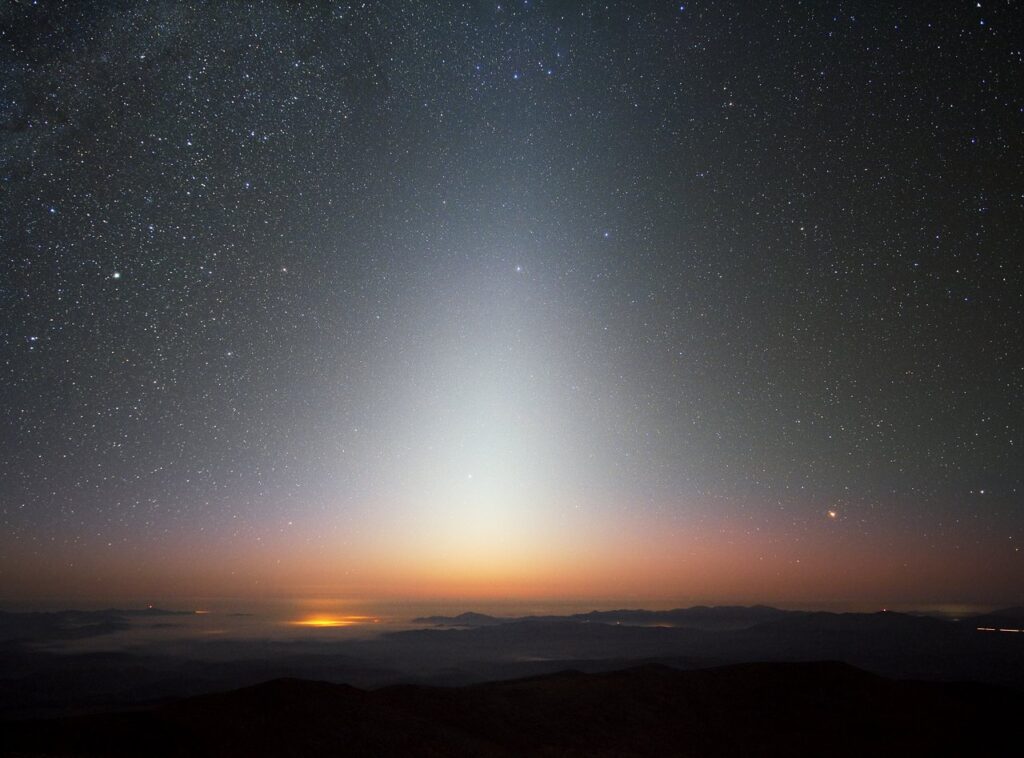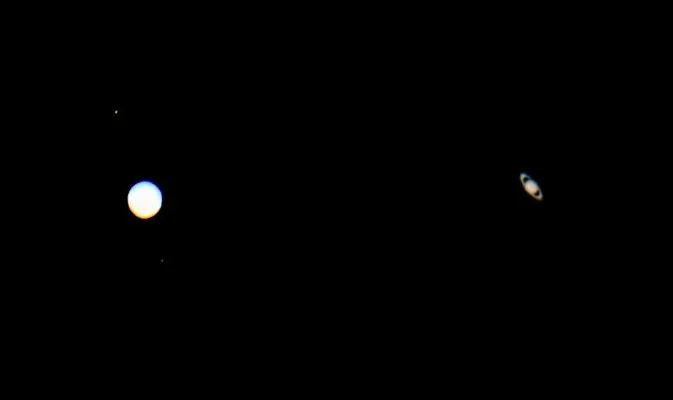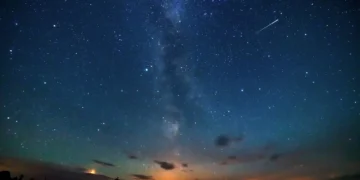February 2025 is shaping up to be a breathtaking month for stargazers and astronomy enthusiasts. From dazzling planetary alignments to rare celestial phenomena, the night sky will be alive with wonders that are both awe-inspiring and scientifically significant.
The Moon and Venus: A Stellar Duo (February 1)
The month kicks off with a stunning pairing of the young waxing crescent moon and Venus, creating a celestial masterpiece in the southwestern sky. On February 1, 2025, Venus will appear to the right of the moon, with Saturn positioned just below them, about a vertical fist-width apart when viewed at arm’s length.

This alignment offers a perfect opportunity to witness Earthshine—the faint glow on the moon’s dark side caused by sunlight reflecting off Earth. Earthshine is a rare phenomenon that highlights the interconnectedness of our solar system. It’s a reminder of how sunlight bounces between celestial bodies, creating ethereal visuals. This event is not just beautiful but also educational, offering a chance to observe the moon’s surface features in a unique way.
This trio of the moon, Venus, and Saturn sets the stage for a month filled with celestial highlights, making it a must-see for anyone with even a passing interest in the night sky.
Venus at Its Brightest: A Shadow-Casting Wonder (February 14)
February 14 isn’t just Valentine’s Day—it’s also the day Venus reaches its peak brightness, shining at an impressive magnitude of -4.9. At this brightness, Venus will be the third brightest object in the sky after the sun and moon. Under dark sky conditions, it’s even possible to see your shadow cast by Venus’s light—a phenomenon known as a “Venusian shadow.” Venus’s brightness is due to its proximity to Earth and its highly reflective cloud cover.
Observing a Venusian shadow requires pristine conditions, but it’s a testament to the planet’s brilliance and the delicate interplay of light in our solar system.
3. Zodiacal Light: A Cosmic Glow (February 14)
Alongside Venus’s brilliance, February 14 also offers a chance to see the zodiacal light—a faint, triangular glow in the western sky after dusk. The zodiacal light is caused by sunlight reflecting off interplanetary dust particles scattered across the solar system.

On this night, Venus may appear within this glow, creating a breathtaking visual and photographic opportunity. The zodiacal light is often overlooked but is a fascinating reminder of the remnants of our solar system’s formation.
It’s a subtle yet profound connection to the cosmic processes that shaped our world. This phenomenon is a perfect example of how even the faintest lights in the sky can tell a story about the universe’s history and evolution.
Mercury and Saturn: A Close Encounter (February 24-25)
Toward the end of the month, Mercury and Saturn will have a close encounter in the western sky at sunset, offering a rare planetary pairing. On February 24-25, Mercury will appear just to the right of Saturn, low on the horizon.

Binoculars will be essential to spot this duo, as they’ll be in bright twilight. This event is significant because Mercury is often hard to spot due to its proximity to the sun. Its pairing with Saturn provides a unique opportunity to observe two very different planets—one rocky and close to the sun, the other a gas giant with iconic rings.
5. Winter Constellations: A Celestial Backdrop
Throughout February, the bright constellations of winter will dominate the night sky, providing a stunning backdrop for the month’s planetary events. Orion, Taurus, and Gemini will be prominently visible, each with their own fascinating stars and deep-sky objects.
For example, Orion’s Belt points to Sirius, the brightest star in the night sky, while Taurus hosts the Pleiades Star Cluster. These constellations are not just beautiful—they’re also rich in scientific significance. Orion’s Nebula, for instance, is a stellar nursery where new stars are born, offering insights into the life cycle of stars.
6. Why These Events Matter: Science and Wonder Combined
The celestial events of February 2025 are more than just pretty sights—they’re opportunities to learn about the science of our solar system and beyond. From Earthshine to the zodiacal light, each phenomenon offers a glimpse into the physical processes that govern our universe.
For example, the alignment of planets provides insights into orbital mechanics, while the brightness of Venus highlights the role of atmospheric composition in planetary visibility. These events also inspire curiosity and wonder, reminding us of our place in the cosmos.
7. How to Make the Most of February 2025’s Sky Events
To fully enjoy February’s celestial lineup, a little preparation and the right tools can make all the difference. Binoculars or a small telescope will enhance your view of the moon, planets, and star clusters.
For astrophotography, a tripod and long-exposure settings are essential to capture events like the zodiacal light or Venusian shadows. Finding a dark sky location away from city lights will significantly improve your experience.
Apps and star charts can help you navigate the night sky and identify key objects. With the right approach, you can turn February 2025 into a month of unforgettable cosmic exploration.
Conclusion: A Month to Remember
February 2025 promises to be a month of celestial wonders, from the dazzling brightness of Venus to the subtle glow of the zodiacal light. These events are not just visually stunning—they’re also rich in scientific significance, offering insights into the workings of our solar system and the universe at large. By taking the time to observe and appreciate these phenomena, we can deepen our understanding of the cosmos and our place within it. So mark your calendars, grab your binoculars, and get ready for a month of skywatching you’ll never forget.



















